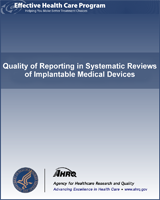| Items for Key Question 1 |
|---|
| Search terms | Keywords for identifying relevant studies for the research questions (i.e., population, interventions, comparator, outcomes, and study design [PICOD]), or complete search strategy (e.g., keywords, medical subject headings) were described or referred to elsewhere. |
| Searches in multiple databases | Search was conducted in more than one electronic database. |
| Search years | Time period of the articles searched and included was explicitly described. |
| Searches in multiple languages | Search was conducted in English and other languages. |
| Searching for unpublished data | Authors explicitly stated the efforts to include unpublished data (e.g., contact with study authors, searching meeting abstracts or conference preceding, dissertations, etc.[also known as a “grey literature” search]). |
| Inclusion or exclusion criteria | Definitions of at least two of the PICOD criteria (e.g., randomized controlled trials of drug-eluting stents were included) were reported. |
| Baseline description of the population | Health status of the population at baseline (i.e., hypertension, diabetes, or coronary artery disease). |
| Types of interventions/exposures | Interventions or exposures were described (usually includes device name, or a brief description, or type of device). |
| Types of comparators | Comparators were described (can include another device, or medical treatment, or surgical treatment). |
| Types of outcomes | Outcomes or endpoints were defined. |
| Types of study designs | Design of the included studies was described. |
| Number of included and excluded studies | Number of eligible and ineligible studies identified from the search was reported. |
| Reasons for exclusion | Reasons for exclusions were described. |
| Flow diagram for the number of included and excluded studies | A flow diagram showing the progress of study selection was presented. |
| The total number of primary studies included in the systematic review/meta-analysis | The total number of studies that met inclusion criteria (often reported in the text, tables, or figures). |
| Graphical presentation of the results | Graphics (e.g., forest plots, trends in outcomes over time, and regression plots) summarizing individual study estimates and overall estimates were presented. |
| Meta-analyses were performed | Description of whether a meta-analysis was performed. |
| Costs or cost-effectiveness | Specific discussion of costs of devices or analyses of cost-effectiveness. |
| Items for Key Question 2 |
|---|
| Device or operator-specific | |
| Data on differences across device characteristics were discussed | When multiple devices are used, the differences among devices (e.g., sirolimus-eluting stents, paclitaxel-eluting stents, or bare-metal stents) were discussed across primary studies included. |
| Data on differences within device characteristics were discussed | Differences within devices (e.g., differences in programming within implantable cardiac defibrillator) were discussed across primary studies included. |
| Evolution of devices over time were discussed | Discussions within systematic reviews about evolution (change or development) of devices across primary studies evaluated. |
| Details of training/certification of operator were reported | Details within systematic reviews can include training, prior experience in procedures performed, or any other performance standards. |
| Ramp-up in provider technique (i.e. learning curve) was discussed | There was a relevant discussion about how the surgeon's experience with the device may affect outcomes. |
| Level of expertise of team/site were considered | Discussions were made related to the levels of expertise of a team within hospital where operators practice that may impact outcomes. |
| Practitioner variability were discussed | Variability among operators because different sets of operators are involved in each arm of the trial was discussed. |
| “Volume at sites” effect were discussed | There was a relevant discussion about how site experience with the device may affect outcomes. |
| Items for Key Question 3 |
|---|
| Handling of heterogeneity | |
| Models for meta-analyses were reported | The methods of combining estimates (e.g., fixed- or random-effects models) were reported. |
| Meta-analyses used accepted methodology | Accepted methods were used when two or more studies were combined in meta-analysis or five studies or more studies were included in meta-regression analyses. Additionally studies were grouped by design or studies were grouped across similar interventions. |
| Heterogeneity was assessed or discussed | Sources of heterogeneity within population or among devices were discussed or quantified using statistical methods. |
| Sensitivity analyses were assessed | Details of the range of treatment estimates and confidence intervals resulting from the various sensitivity analyses were described. |
| Results by subgroups were considered or quantified | Potentially important subgroup results were discussed (qualitatively) or quantified using accepted methods. |
| Items for Key Question 4 |
|---|
| Assessment of risk of bias | Potential impacts of the biases present in included primary studies were evaluated. |
| Publication bias was assessed | Quantitative assessment of publication bias (e.g., funnel plot, Begg and Egger tests) was used. |
| Use of specific checklist for quality items | The list of quality items for the validity (or quality) assessment of studies were applied and reported for each included study. |
| Study limitations were described | Specific limitations either relating to primary studies or relating to the systematic review methodology were described. |
| Overall strength of the body of evidence was assessed | Specific methods were used to assess the overall body of evidence (i.e., other than for example “strong evidence”). |
| Specific future research recommendations were made | Specific suggestions for future research agenda (i.e., other than “more research is needed”) were made. |
| Funding source was declared | Specific funding source to conduct the systematic review was identified or absence of funding was made explicit. |
| Sub-item: Authors' affiliation to industry was reported | Whether authors of the systematic review were on the board or employees of a device industry or had received current or previous funding from an industry relevant to the device reviewed was reported. |
